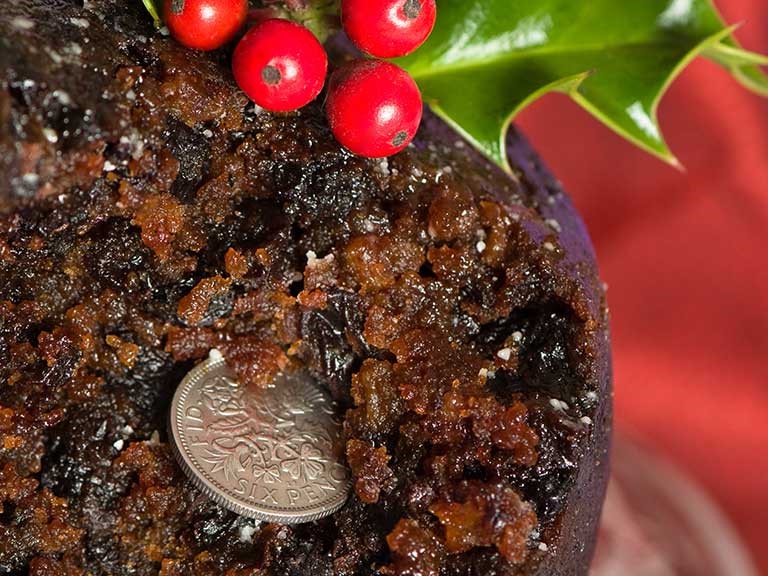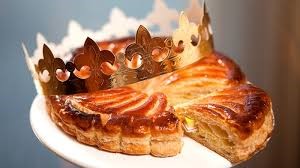
Prefer to read it on the train/ in the bath/ during christmas dinner? Print-friendly PDF version here.
 The Christmas Blog
The Christmas Blog
Ig Noble Awards
Christmas In Crete
Hiding Coins in Cakes
12 Joys of Christmas
The 2017 Christmas Quiz!
The Christmas Blog
Welcome to the now traditional (i.e. we’ve done it before) Xmas Enews and Blog. Once again, we try to offer uplifting and provocative messages with some kind of loose association with CUREE’s activities, namely professional development and evidence-informed practice. Normally written by Philippa, this edition has been delegated to the rather more mischievous MD with permission to Puck it up a bit. So can we feel uplifted in our Education system this Christmas? I think we can despite the continuing baleful influence of Trumpxit.
What have the romans EVER done for us?
This famous scene from the epic Life of Brian, with its list of the benefits from the Roman Empire, left the most important one out; a system of rules, procedures, recording and communications and a cadre of skilled people to operate it - AKA a bureaucracy! Hold that thought as I’m going to come back to it.
 Firstly, let’s reflect on what a good year it’s been for women in high profile education roles. Justine Greening holds the top job at the DfE and Amanda Spielman took over as Chief Inspector. Alison Peacock became the first Chief Executive of the Chartered College of Teaching. In fact, at least eight of the eleven executive agencies reporting to DfE are led by women. Women are also prominent education academics holding the top jobs at London, Oxford, Warwick, and Birmingham to pick out just a few. Both education trade rags are headed by women [but, stop press, I’ve just seen that Laura McInerny is stepping down from editing Schools Week]. Oh, and did I mention that CUREE is headed by a woman? We wouldn’t have had any of this in the Roman Empire!
Firstly, let’s reflect on what a good year it’s been for women in high profile education roles. Justine Greening holds the top job at the DfE and Amanda Spielman took over as Chief Inspector. Alison Peacock became the first Chief Executive of the Chartered College of Teaching. In fact, at least eight of the eleven executive agencies reporting to DfE are led by women. Women are also prominent education academics holding the top jobs at London, Oxford, Warwick, and Birmingham to pick out just a few. Both education trade rags are headed by women [but, stop press, I’ve just seen that Laura McInerny is stepping down from editing Schools Week]. Oh, and did I mention that CUREE is headed by a woman? We wouldn’t have had any of this in the Roman Empire!
Second, and it may be no coincidence, we are seeing a shift to supporting the educators and away from kicking or reorganising them. Threats to the system were softened and both rhetoric and resources are beginning to focus on development. The Chief Inspector is steering Ofsted in the direction of offering more time for schools to recover from Measures and some support for getting there. Greening chiselled out some more cash to substantially reduce the impending shortfall in school budgets and returned some of the money the Treasury had pulled out of the system by hacking the Education Services Grant in the form of a raft of funding streams focussed on professional development and school improvement. Those of you with a Transactional Analysis perspective on this might see it as the transition from Chastising Parent (Gove) to Nurturing Parent and it’s not a moment too soon.
Third, it’s been pretty good for those of us who evangelise about evidence-informed policy and practice. There are good signs of the DfE actually taking notice of the evidence they’re offered though we still haven’t seen the results of the ‘grammar school’ consultation – despite the relentless efforts of the aforementioned Laura McInerny to prise it out of them. They are certainly demanding evidence from those in the system stepping up to the invitation to put together school improvement and professional development programmes. But here’s where my relentless optimism fails me – and where we get back to the Romans. Evidence is good – the public want some confidence that the dosh invested in your scheme stands a chance of a beneficial outcome. We also want to know what the outcome actually was. The trouble is that, on the former, we have become overly dependent on the work of the Education Endowment Foundation and it can’t actually live up to the central role it’s been given. For instance, if my local strategic problem is literacy, I’m going to look for guidance in EEF’s Toolkit on what I can do about it - and a cornucopia awaits. But what if it’s maths at Key Stage 3 and I want to know what actions or interventions have been tested by EEF and judged effective? The difficulty is that the Toolkit can’t answer that question, at least not in relation to particular maths interventions as the review hasn’t been published yet. In the meantime, EEF are offering some common sense (and evidence informed) guidance about the kinds of things which might work. Science is in roughly similar position but without the practical guidance overview. My point here is that it’s really not helpful setting EEF as The Font Of All Knowledge to find in some key subject domains a slightly soggy note in the bottom saying ‘Please Come Back Later’. This is the hazard of trying to use the slowly accumulated product of a long term project for short term instrumental purposes.
Last, and this where the Romans re-enter, a supervisory apparatus has been quickly assembled by DfE to monitor the growing number of school improvement schemes being funded by the Strategic School Improvement Fund (SSIF) and the like. For those officials – and for us – the problem is that there is as yet nothing to evaluate so instead they audit and they audit a lot! This is an understandable response to a sense of risk but it is distracting them and the projects they supervise from setting up and properly implementing really effective evaluations – which would help the whole system and not just the direct participants learn from the experiences.
The Romans bequeathed us a bureaucracy and anyone involved in a complex project will recognise what an important bequest that was. But the reason that ‘bureaucracy’ is so often used pejoratively is that the records, processes and systems can become ends in themselves. The Romans used their bureaucracy to build roads, aqueducts, sanitation, public order and the other components of civilisation. We want our education leaders to use the positive power of bureaucracy to improve the lot of our 21st Century children.
Felicem Natalem Christi
Paulus Maximus Crispus
Ig Noble Awards
This time of year has come around, yes it is time for us at CUREE to offer congratulations to all this years's IG Nobel Prize Award winners for their interesting and inventive work. We offer thanks to the following teams, individua ls and organisations:
ls and organisations:
- Fardin (Physics Prize), for using fluid dynamics to investigate whether a cat can be both a solid and a liquid
- Puhan et al (Peace Prize), for demonstrating that regular playing of a digeridoo is an effective treatment for obstructive sleep apnoea and snoring.
And
- Heathcote (Anatomy Prize), for his medical reasearch study "Why do old men have big ears?".
One last congratulations to all winners. To see a full list of winners click here
Christmas In Crete
For Crete, the Christmas season is in full swing by December 6th, the Feast of St. Nicholas when most people will decorate a Christmas tree in their house (which used to be a wooden boat), and will last through January 6th, the Feast of Epiphany.
On the day and evening before Christmas and New Year's, children sing the equivalent of carols (kalanda) from house to house. These kalandas bless the house. Often the songs are accompanied by small metal triangles and the traditional Cretan lyra. Children are rewarded with sweets and money. Many people bake special bread called Christopsomo (Christ Bread) for Christmas and cookies (melomakarona and kourampiedes).
On New Year’s Eve, in the evening, family and friends gather at home and feast. The housewife has baked a Vasilopita (the cake of Holy Basil, actually sprinkled a normal cake with icing sugar), with a small coin wound in the dough with aluminum foil (= Flouri); is that will bring its finder good luck and happiness throughout the coming year. Midnight has arrived and we wish everyone Χρόνια Πολλά (chronia Polla =many years), we eat the Vasilopita and Flouri Finder is envied!
[Saint Basil is the Greek Santa Claus which celebrates on 1st January.]

Evangelia Araviaki
Hiding Coins In Cakes
Christmas season is here and we at CUREE gathered to discuss the Christmas traditions we have experienced so far. After investigating a bit more the tradition of hiding coins/things in cakes/other goods, here is what we found:
Since Biblical times there is the tradition of putting coins at birthday cakes based upon the story of the three wise men. The three wise men when bringing the gifts to newborn Jesus, they could not decide who would first give the gift to Him, so they asked the help of a baker. The baker gave them a loaf of bread with a bean baked into it. The one who would get the bean would be the first to give the gift. Over centuries of telling this story the bean was replaced with a coin and it is during the medieval period in Britain that the birthday cake with a coin in it gained popularity. The coin symbolises good luck and the person with the cake would become wealthy. In medieval Britain, a thimble was also added in the cake meaning that the one who would find it would never get married. This tradition was spread worldwide in celebrating birthdays: to USA, Spain and China.
As these customs are still alive and practiced, many people choose commemorative coins, sometimes extended with space to include a message, which makes the gift more personal. Commemorative coins are also being kept as keepsake gifts.
 Hiding an object in the pudding is an old tradition in the UK that seems to date back to Edward II (early 1300s). A bean or a dried pea or a silver ring or a small crown was hidden inside a pudding and, similarly, the person who would get it on the Twelfth Night of Christmas was king or queen for the night. The first coins used were a penny or a Silver Farthing, which after WW1 it became a threepenny bit and then a sixpence. Asilver thimble or tailors were also used in the puddings.
Hiding an object in the pudding is an old tradition in the UK that seems to date back to Edward II (early 1300s). A bean or a dried pea or a silver ring or a small crown was hidden inside a pudding and, similarly, the person who would get it on the Twelfth Night of Christmas was king or queen for the night. The first coins used were a penny or a Silver Farthing, which after WW1 it became a threepenny bit and then a sixpence. Asilver thimble or tailors were also used in the puddings.

In China they surround the newborns with trinkets and the one that the baby picks up will decide its interests and career for the future. One of the trinkets is a coin that indicates whether the baby will be rich and financially secure. Additionally, on the Lunar New Year, they prepare dumpling to eat within the first hour of the New Year. They either put a coin in one of them or a lot of sugar. The person who eats the dumpling with the coin/sweet taste is said to be lucky for the Lunar New Year.
 In France they do the “” tradition which is an apple or frangipane cake shared at Epiphany, on 6 January. They are sold with gold paper crowns and in the cake there is a “fève”, a small charm, hidden inside and the person who founds it is the queen or the king and h
In France they do the “” tradition which is an apple or frangipane cake shared at Epiphany, on 6 January. They are sold with gold paper crowns and in the cake there is a “fève”, a small charm, hidden inside and the person who founds it is the queen or the king and h as to wear the golden paper crown.
as to wear the golden paper crown.
In Greece, vasilopita (the cake for the New Year day with a hidden coin in foil in it) is associated with a legend of Basil of Caesarea. According to one story, Basil called on the Roman citizens of Caesarea to raise a ransom payment to stop the siege of the city by collecting jewellery from the families. Due to this act, the enemy was embarrassed and called off the siege. Basil then was tasked to return the items, but did not know which items belonged to which family. So, he baked all of the jewellery into loaves of bread and distributed the loaves to the city. By a miracle each citizen received their exact jewellery. Greeks cut vasilopita after midnight on the New Year’s date and the one who gets the coin is found to be lucky for the New Year.
Evangelia Araviaki
12 Joys of Christmas
So we all know the traditional Christmas Carol, 'The Twelve Days of Christmas'. So at CUREE we decided to create our own version with reminders of all the things we have to be joyful about in 2017.
The 2017 Christmas Quiz
How much do you know about Christmas? Have a go at our christmas quiz and find out
- Who tried to steal Christmas from the "Whos of Whoville" in the 1966 cartoon based on the Dr. Seuss Story?
- Which ocean is Christmas Island in?
- What Christmas plant is "Viscum" used to label?
- The name of Scrooge's dead business partner?
- What gift is an anagram of ESNECNIKNARF?
- Which British band released a song called 'Merry Xmas Everybody' in 1973?
- Which saint gave bags of gold to the poor which has since inspired us to give chocolate covered coins at Christmas time?
- How many gold rings are there in 'The Twelve Days of Christmas' song?
- As a family tradition in Sweden, millions of people settle down on Christmas Eve to watch which famous Walt Disney Character?
- Which department store released a Xmas TV advertisement in 2015 featuring a young girl looking at the moon through a telescope?
From us here at CUREE


